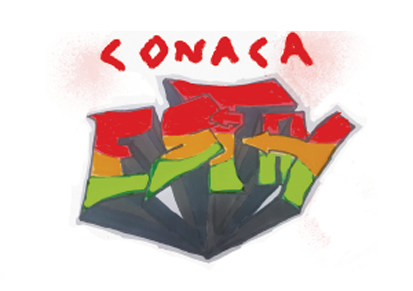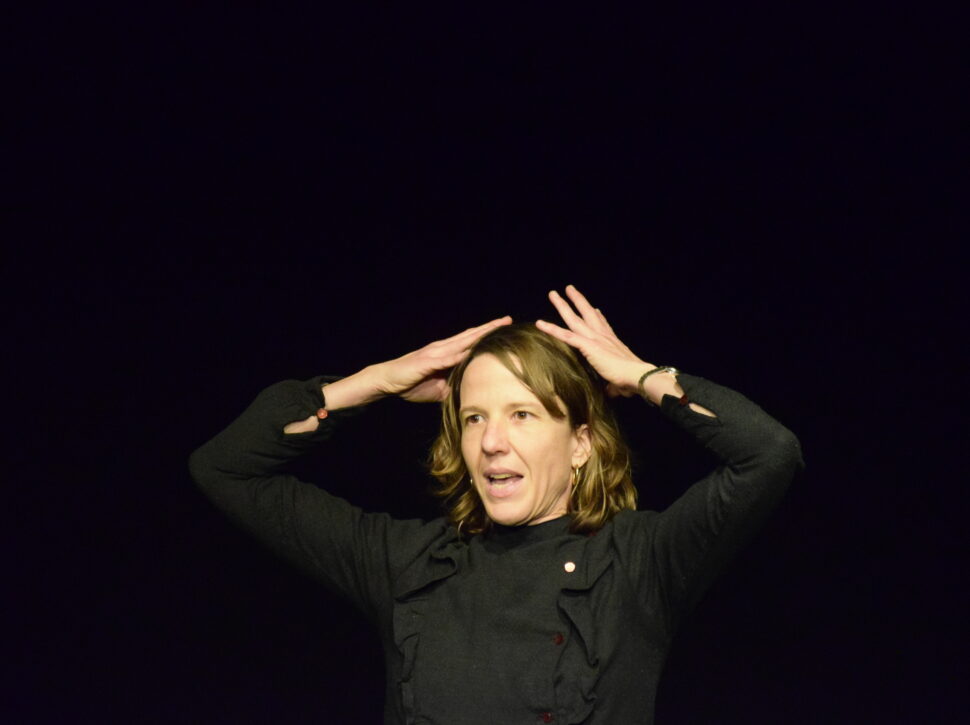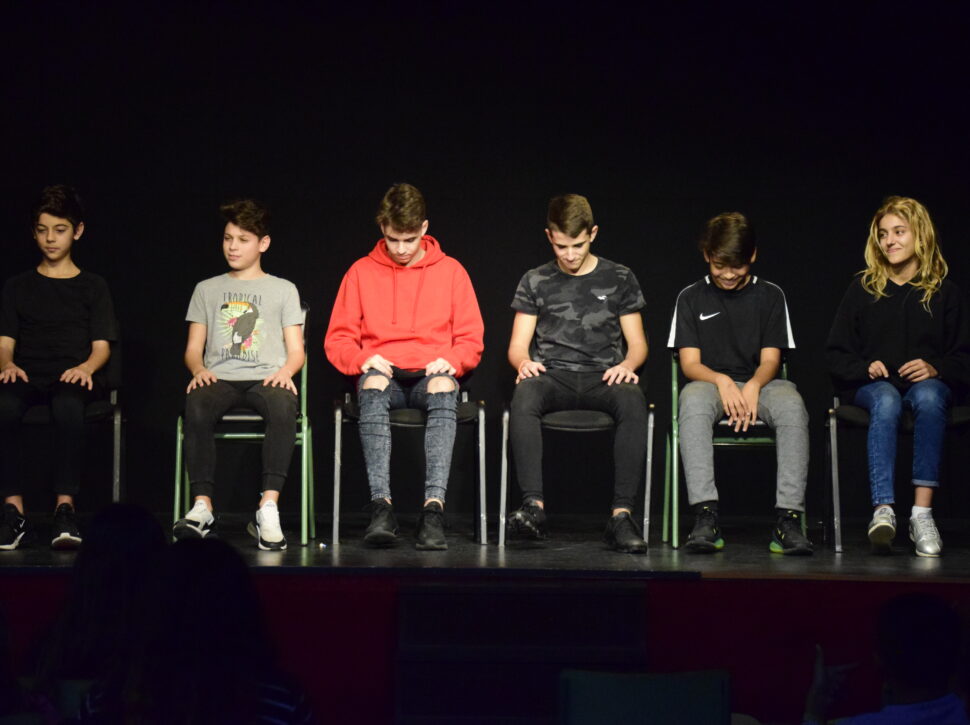Classroom sessions with artist Barbara Van Hoestenberghe focused on musical language and movement language with 1st and 2nd-year secondary students from IES Montjuïc. Imma, a teacher at the school and also a musician, supported the process — sometimes with the sound of the piano, sometimes with familiar phrases spoken in different rhythms, or by teaching us how to work with our own voice. We also brought surprises to the process, suggesting rhythms or songs we liked, ideas, curiosities — adding more material to explore and build together.
The sounds made even more sense when accompanied by different movements of our bodies. From the very first session, Barbara’s proposal was to create a resource that we could continue using even after the sessions had ended — whenever we wanted or needed to, whether feeling nervous, tired, or unfocused. That’s why, throughout all these sessions, we explored sounds and movements connected to CALM, FOCUS, and ATTENTION. After 12 sessions of exploration and construction, CONACA Estay took shape.
CONACA Estay is an experimental process through sound and movement developed within the classrooms of IES Montjuïc, carried out by 1st and 2nd-year students, teacher Imma Solé, and artist Barbara Van Hoestenberghe, aimed at cultivating FOCUS, ATTENTION, and CALM through the use of our own bodies.
How does CONACA ESTAY work?
While in the classroom, anyone who feels the need — at any moment — can activate CONACA Estay. You just need to propose it to the group and follow these steps:
- Choose which of the three sequences you want to do: FOCUS, ATTENTION or CALM
- Everyone stands up, ready to move their bodies.
- Play the audio of the chosen sequence (you can download the audios HERE)
- While listening to the guiding voice in the audio, follow all the movements with your body.
- Now that we’re feeling much better, we can return to the task we were doing before activating CONACA Estay.
Read more
Read less











